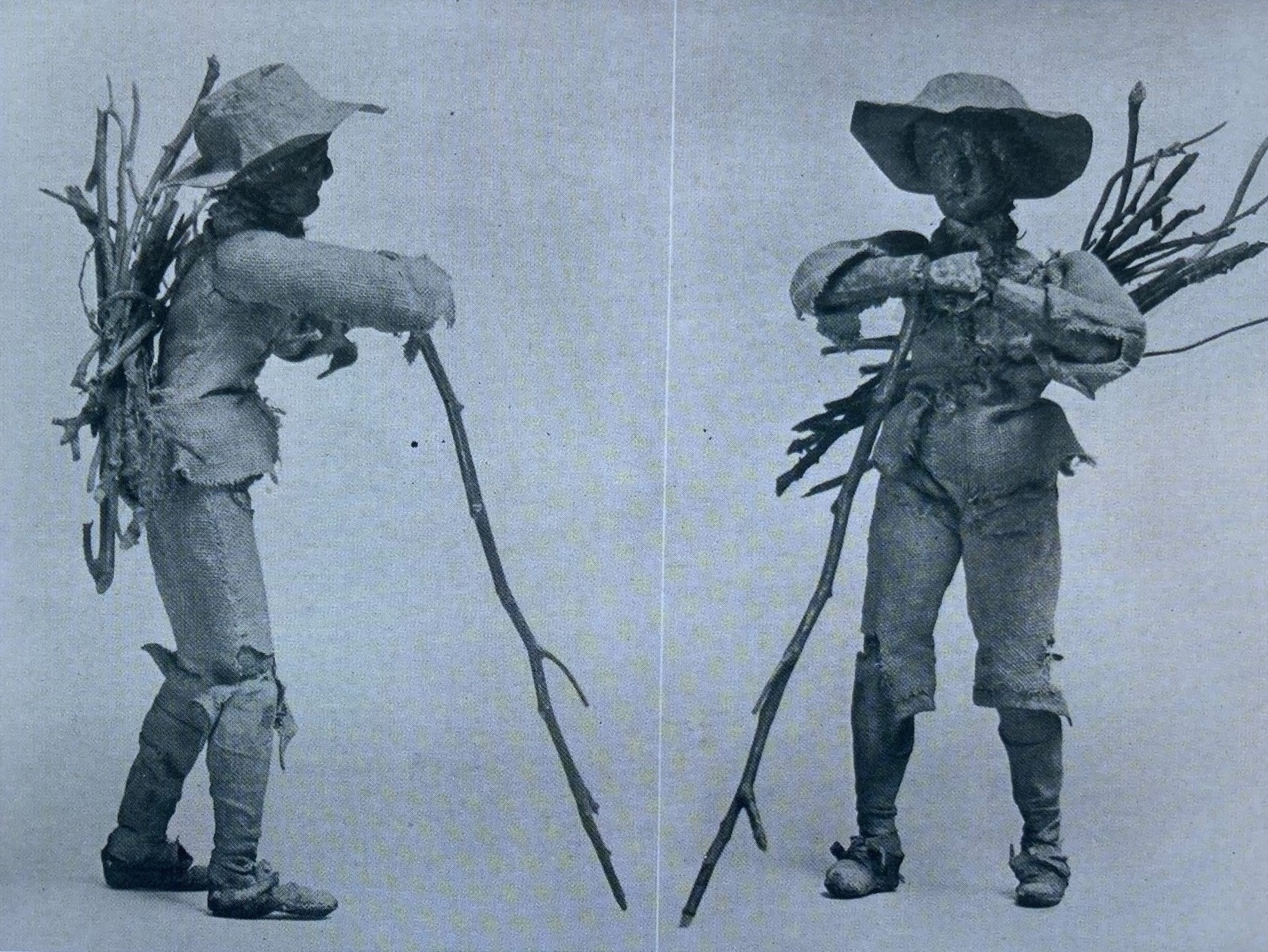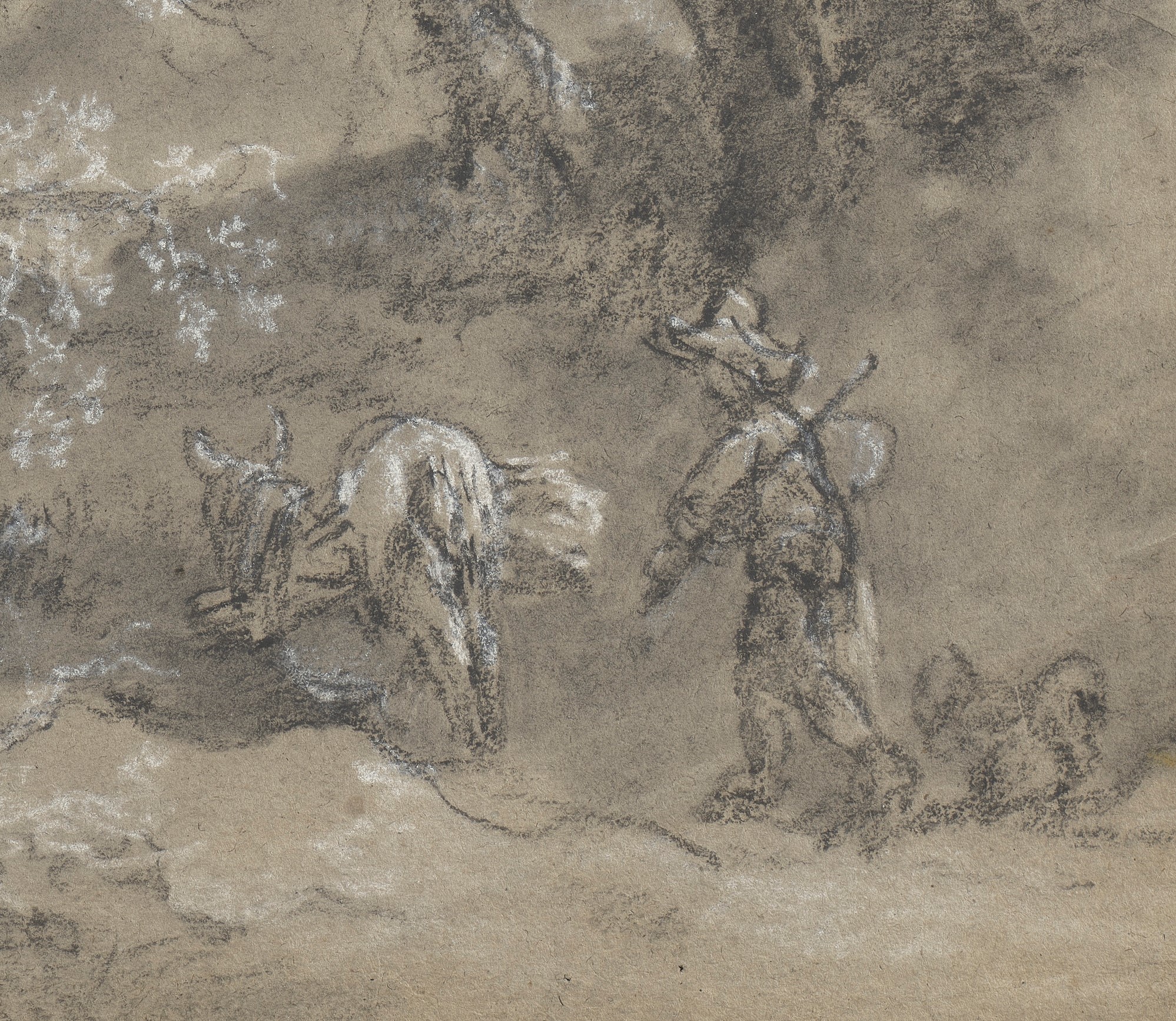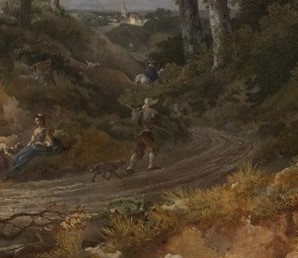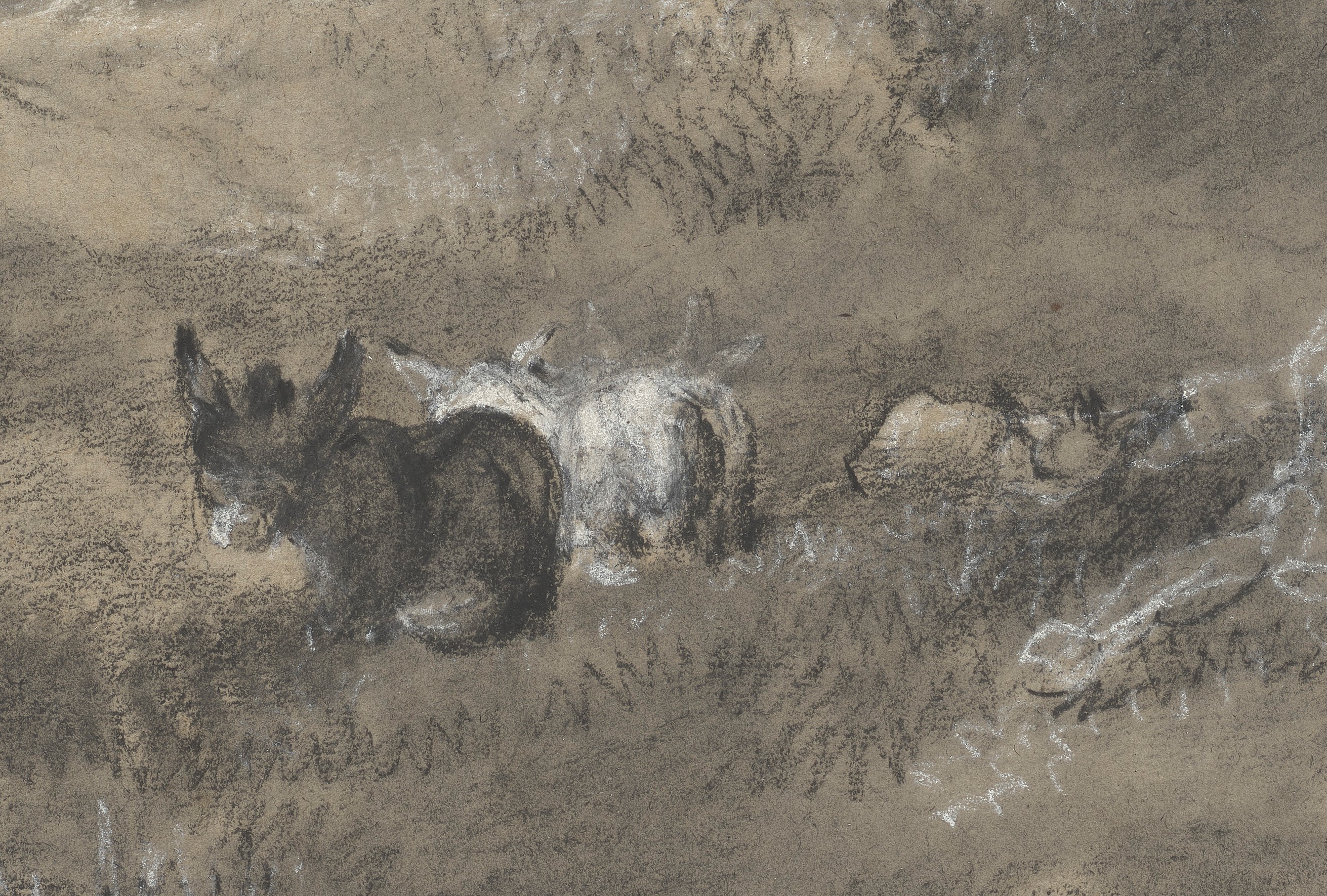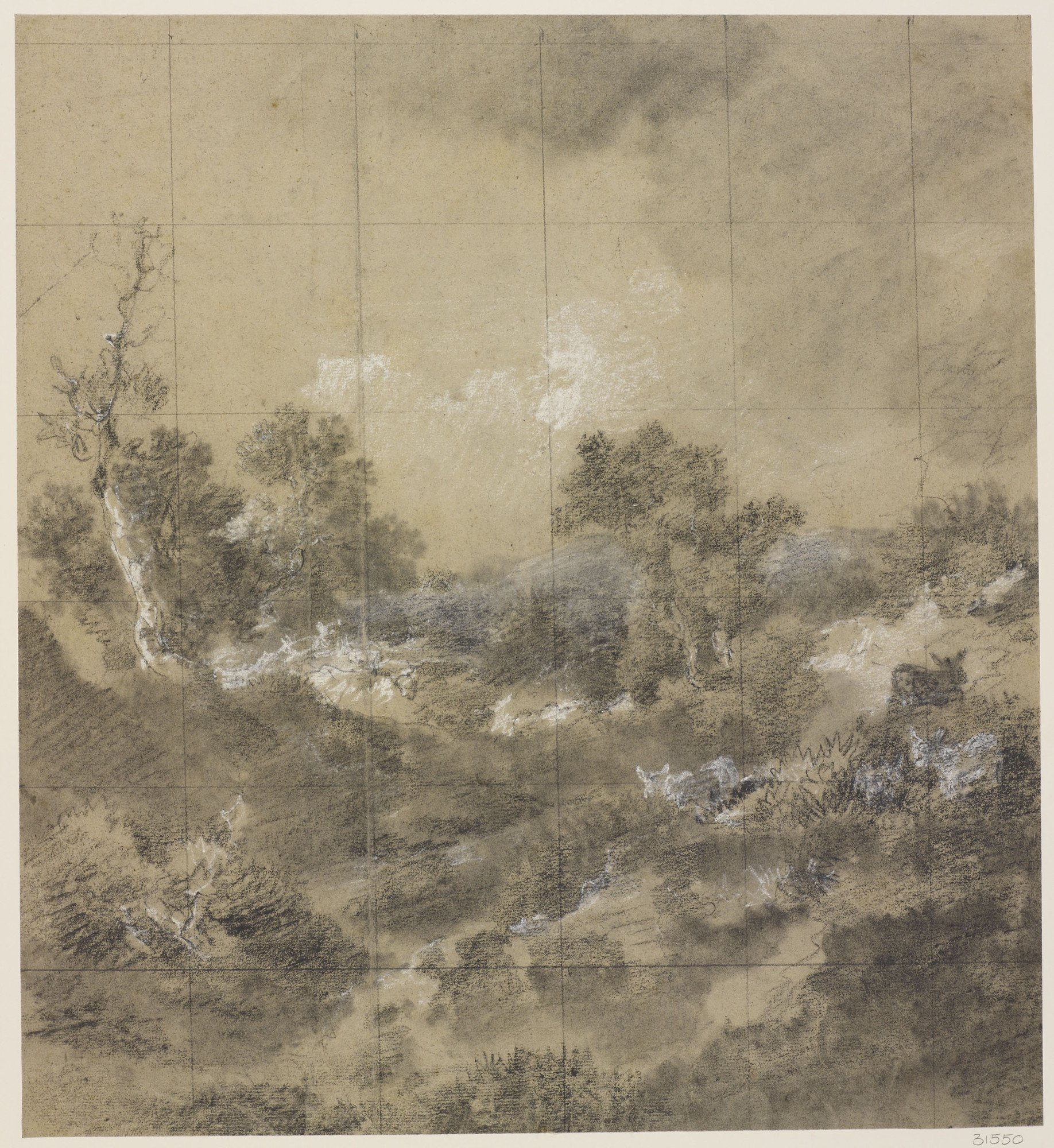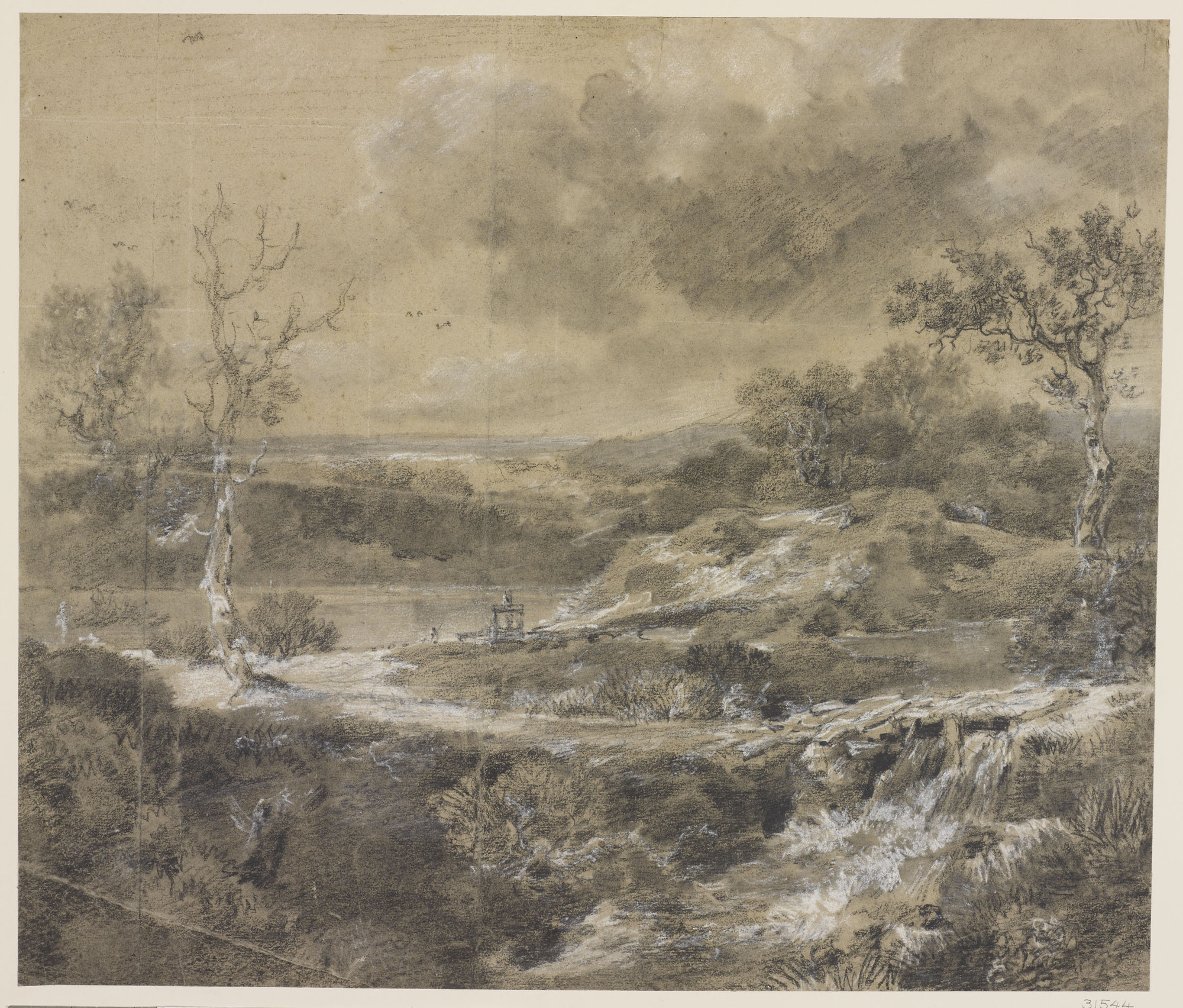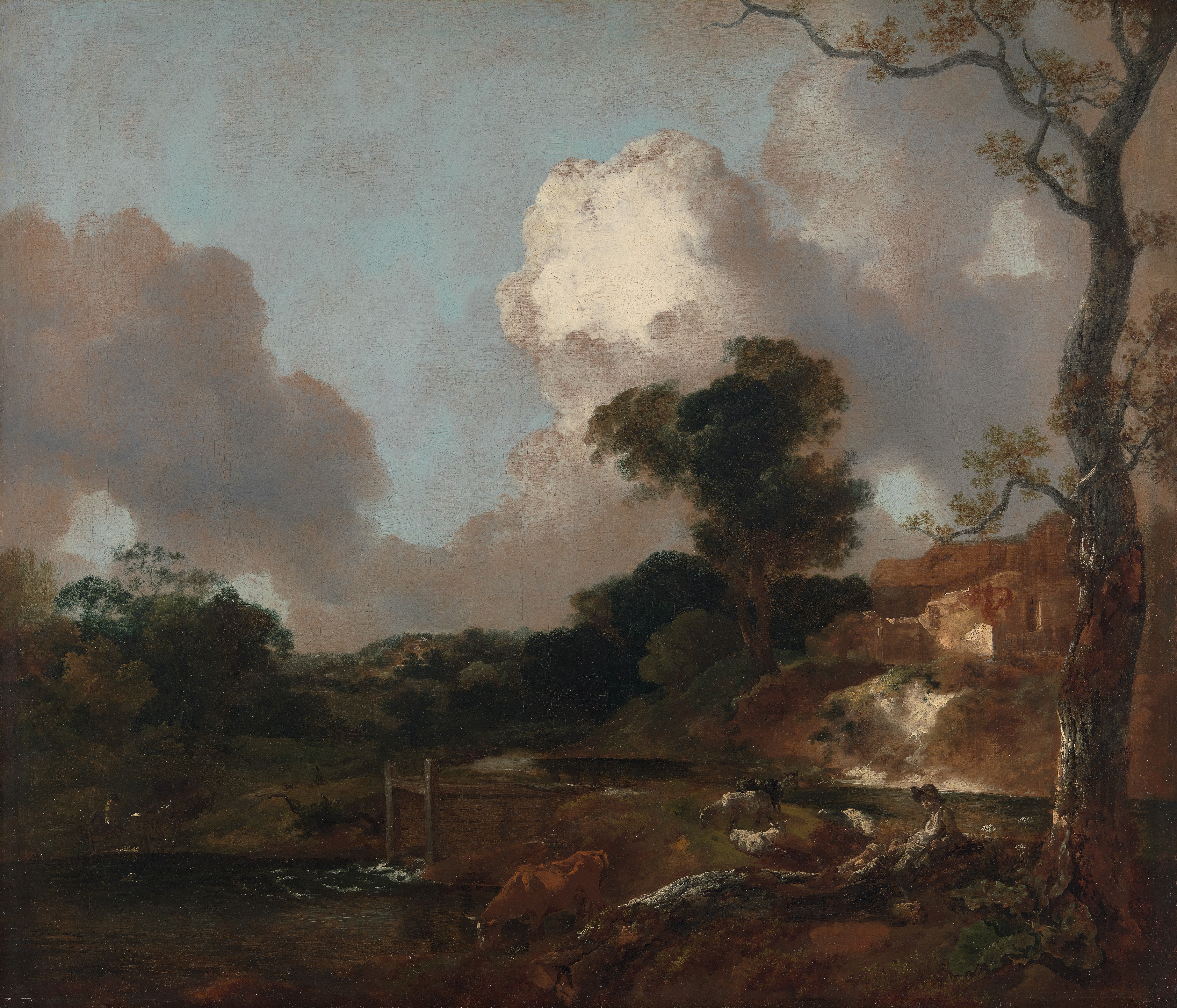
Drawing in the Studio
[I have] seen him make models, or rather thoughts, for landscape scenery, on a little, old-fashioned folding oak table […] He would place cork or coal for his foregrounds, and set up distant woods of broccoli…
For Gainsborough, landscape drawing was not an activity that was exclusively carried out in nature. He also used drawing, when back in his studio, to experiment with ideas for paintings and to plan out specific compositions.
W. H. Pyne and Joshua Reynolds both describe Gainsborough using a small table on which he would model his own landscapes. On this table he arranged stones and pieces of coal for rocks and banks, broken mirror for watery pools and sticks of broccoli for trees.
Several of the Royal Collection drawings have a contrived character, with elements arranged on the page to make a perfectly balanced landscape composition.
Gainsborough also used studio models, such as jointed dolls, to help him to pose and draw the figures for his landscapes. He combined these with studies of animals he had made out in the countryside. Gainsborough wrote of these figures that they ‘fill a place (I won’t say stop a Gap) or create a little business for the Eye to be drawn from the Trees in order to return to them with more glee’. Cornard Wood is rich with animals and figures that Gainsborough had compiled in his drawings.
Other drawings were made with paintings specifically in mind. In addition to the study for Cornard Wood, two further sheets have been ‘squared up’, presumably for transfer to canvas in the studio.
Together, the 25 new drawings are beautiful responses to the Suffolk landscape of which Gainsborough remained fond for the rest of his life, and they provide many exciting new avenues for our understanding of Gainsborough’s early years.





